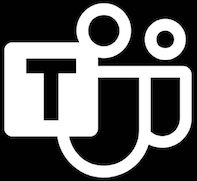How to Find the Right Web Design Company?
“A man’s errors are his portals of discovery.”
What does the above quotation convey? To have a portal, you have to commit mistakes. Isn’t that funny? No, not at all. It may be a motivating sentence, but in business it can turn out to be doomsday for small start-ups with little investments. This article has been done especially for small start-ups who want to make it in their respective fields and are planning to launch their website or looking for a facelift or adding new functionalities to there existing site or aren’t sure about their design requirements.
Choosing a Web Design Company
With a multitude of web designers and developers out there, from freelancers, to agencies, to online templates, how do you know what the right fit is for your company, and more importantly, for your goals and objectives? Choosing a web design company is not that a serious job. But choosing a good web design company is a real serious challenge. People say that Internet has made business processes simple and global, but how about the complexities that Internet offers which are unique. Just Search for the term “Good Web Design Firm” on Google, and it comes up with millions of results. For normal human being it’s impossible to search through every result. We will go through the entire process of selecting a Web Design and Development company in a structured way.
STEP 1 – Planning
The first step involves defining your needs. While searching for the right web designer, it is important to have a clear idea what role your new Web site or a redesigned one will fill. Will it provide information to your customers? Will it serve the needs of your employees? Or will it include an online shopping section so that you can sell your products to visitors? Most Web designers will need to know the following:
o The role of your new Web site.
o The intended market or audience of your Web site.
o Your budget.
Take time to consider what you expect from your Web site and the type of information you want to communicate to your potential clients before you approach your designer. This will save you and the designer a considerable amount of time and effort.
STEP 2 – Searching and Creating a Primary list
Searching is a vigorous process and does not require any special skill other than diligence to effectively come up with good results that fulfill your requirements. Just scan through directories, check Google listings on specific key word searches and ask for referrals from your friends or business partners. It does not have to be a very extensive research work.
Referral: Ask business acquaintances, friends, and family which web design firm designed the website for their respective organizations, or if they can otherwise recommend a web design firm.
Web sites: Determine the web design firm that is responsible for the websites of organizations that you admire. These organizations may be your competitors, or in related or unrelated industries. Sometimes the web design firm is included in the site credits, or is listed elsewhere on the website. If you cannot find the credits on the site itself, feel free to contact the organization and ask which web design firm is responsible for the website. This can also be a good source for references for that web design firm.
STEP 3 – Evaluating and Short listing
Once you have gathered a list of potential web design firms you are ready to pare them down to a shortlist. This requires a bit of research work.
o Portfolio – It’s about the three C’s – Credibility, Consistency and Capability. How consistent they are? What are the parameters on which the company is capable enough to fulfill your requirement? Are there any testimonials that speak about their credibility? Do the projects in the portfolio have a consistent quality? Have they consistently given good results in the given time frame? Has the Web design company provided solutions to other companies in your industry? Have they dealt with similar challenges to those faced by your organization? These are some important factors to consider. When you’ve narrowed your search to a few design sources (through recommendations, web directories, or your competitors’ sites), evaluate their online portfolios and their rate structure. A web site doesn’t have to be flashy or animated to do its job. Browse sites they have built, check ease of navigation, organization of information, overall cleanliness and visitor-friendliness. Also, consider hiring a firm that demonstrates some familiarity with your type of business. Just go through the success stories/case studies that have been made available on their web site and corroborate the credentials through references if possible.
o Experience and Fees – This is called the EF of web design firm. Experience and fees are very much inter-related. The general norm is the more experienced you are, the more you are paid. This interesting story can tell you what experience is all about.
Once upon a time there was a steam generating plant that was not producing much steam. After a frustrating search for the cause, the plant manager, in desperation, called in an expert. After only two hours on site, the expert found the problem and placed “X’s” on two pipes that were causing the problem, saying that they had to be removed. When presented with the bill, the plant manager asked the consultant how he could charge $5,000.00 for only two hours of work. When he asked for an itemized bill, this is what he got:
The plant manager got what he paid for and probably a lot more. He had already used up more than that amount on his own staff not to mention the loss in revenue while the plant was shut down. For him, securing the advisory services of a consultant was the right thing to do.
It matters a lot if the company has a good experience in diverse business domains and has professionals and specialists from variegated backgrounds. As such they will have an understanding of different business verticals that may be an advantageous point for your website. Another important factor is budget. What you pay is what you get – WYPIWYG. Never compromise with the quality of your website just for saving few quick bucks. In the long run you will end up on a losing side. Have you ever imagined why American diamonds cost less and than real diamonds when at times it’s difficult to differentiate between the two? It’s obvious – the brilliance and hardness of diamond. This makes another interesting point, you can get a cosmetic surgery done for your website for a lesser cost, but it will lack the functionalities and effectiveness. It can draw visitors but can not turn them into business. So when you pay for something, you definitely get a good deal in return.
o Technology – What is their technological competence? Does this match with your requirement? How many projects they have worked on using the same? How frequently their technology is upgraded- both in terms of software and hardware?
o Deadlines – Has the company carried out the projects in stipulated time? Time is one of the most important factors as the longer it takes, the higher the input costs get. Some companies may offer you a shorter time period and may be ready with the design. But after that starts the long and torrid journey of finding and fixing bugs which may turn your visitors off.
o Responsiveness – How promptly the company responds to your queries? Does it listen to your queries? Are they responsive to my suggestions and questions? Do they explain issues in ways you can understand? Do they share your general vision for the site? Are they interested in Return on Investment for the web site? Do they possess the skills necessary to achieve your goals?
o Communication Process – Poor communication is one of the major bottlenecks for business processes. Ensure that the company with which you are working is comfortable with your language. Generally, English (US/UK) is taken as the preferred language to communicate with each other. What are the tools and technologies they use for communicating? How will they keep you updated with the developments with regards your project? These are some of the important factors that should be kept in mind while deciding about the communication process while choosing a Web Design partner.
o Services – What are the other services that company can offer other than designing? What kind of value-added products or services can the design firm offer?
All these points will help you to narrow down to the list of companies that may offer you viable solutions and help your cause. The next step involves inviting proposals from the short listed parties. Just check through as many cross references that you find justifiable or will satisfy your curiosity. The more time you will invest in this phase, the sweeter will be the returns afterwards.
STEP 4- Proposals
Once you have selected your short-list of top web development firms, request that they send you a proposal. Ask that their proposal include an overview of your requirements and their proposed solution. This will help to determine which web design firm understands your requirements best. Also ask that each web design firm include a description of their development process and a price breakdown for the various aspects of the website project.
STEP 5 – Evaluating Proposals
Evaluate each proposal individually on the basis of merit. Take the following points into consideration:
a) Wellness of the proposal.
b) Respective strength and weaknesses of the companies.
c) Evaluate the presentation and format style.
STEP 6 – Selecting the Company
After your organization has reviewed all proposals, compare them with each other. How do they fare in terms of presentation? How do their processes appear in terms of project management? Do they present scalability and/or upgrade paths for your project, which go beyond the needs of the immediate goals outlined?
After going through all the above process, you should be able to zero in on to a particular company. If the doubt persists, establish communication process between the likely companies to understand their process and commitments.
Article Source: https://bit.ly/3GzmHoQ






 Text Us
Text Us info@geekmob.ca
info@geekmob.ca Schedule Teams
Schedule Teams

